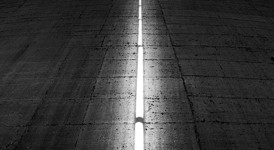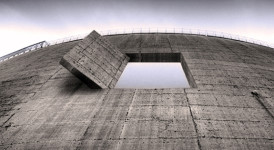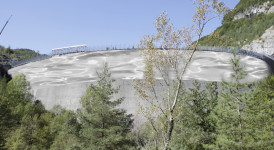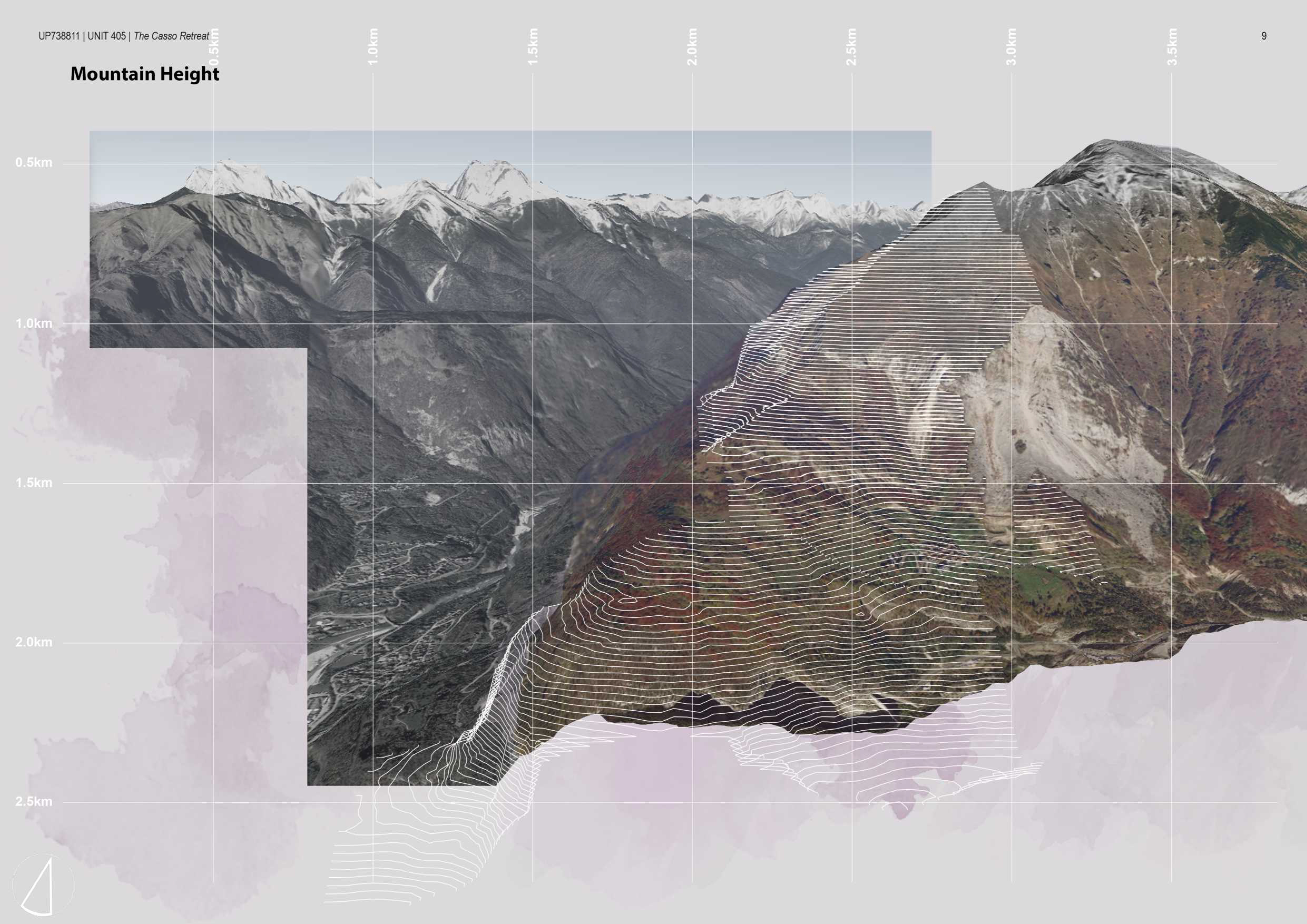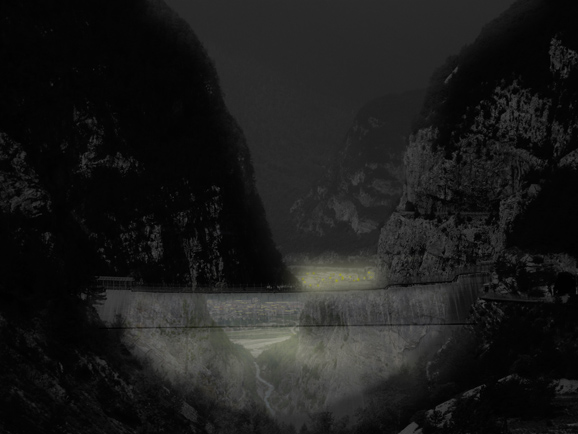
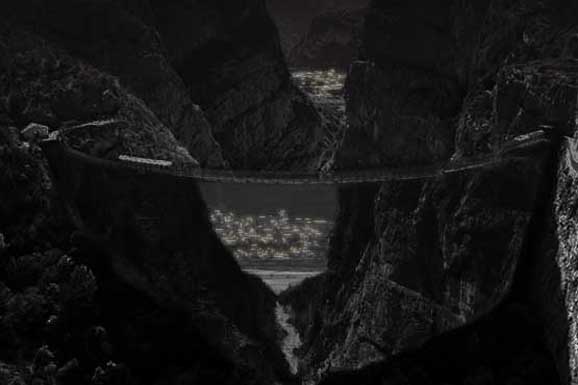
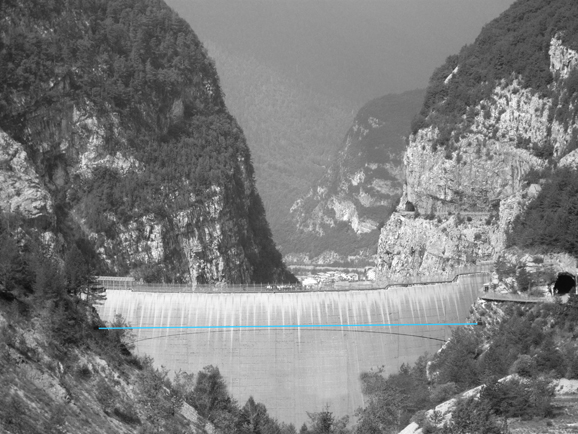
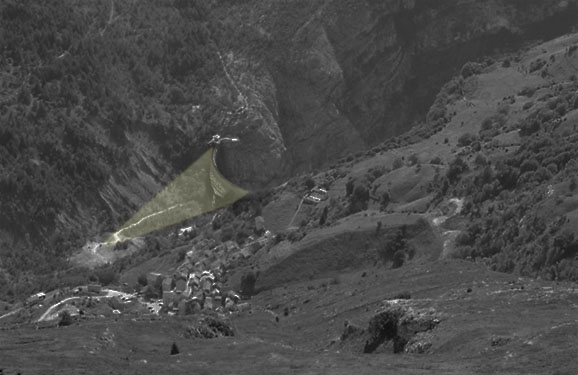
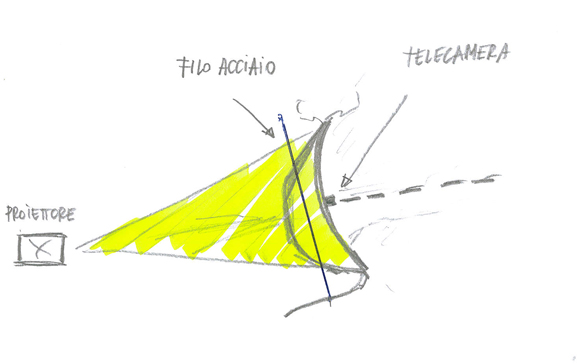
The work shows a double vision which change from day to night.
During daylight, people will be able to recognize a thin thread made of steel, colored in blue. This line, which goes form side to side of the dam wall, marks the level of height reached by the water the night of the disaster. The thread, which is positioned 1/1.5 m far form the wall, is hooked at two rings placed on the two opposite slopes.
A delicate sign that returns to the memory, not intrusive. It speaks softly, telling of a tragedy that shouts loud and noisy, making it difficult to say anything else.
The proposal of the installation aims to create a place for an active listening, a place aware of its own memories, a place that does not forget the past.
At night, then, when the darkness envelops the valley and only the edges of the elements are recognizable, the work will change its appearance. A camera placed on the external wall (west side) of the dam and a projector placed in front of the wall (east side), will film and duplicate the nightlight scene taking place down in the valley. The dam wall will be enlightened from a light cone able to rip up the wall and to allow to see what is happing beyond.
What is there beyond? There is the village of Longarone illuminated by the street light and by the light inside houses, bars, shops.
During night the work tries to remove the huge shape of the dam, reducing the pain of the tragedy and producing a better future made of integrity, justice, and hope.
Beyond the wall that obstruct the view, beyond the border that delimits the present.
–
L’opera mostra una doppia visione, di giorno e di notte.
Durante le ore diurne si potrà vedere un semplice filo di acciaio di colore azzurro che percorre la diga all’altezza del livello dell’acqua all’interno del bacino.
Il cavo dista circa un metro, un metro e mezzo dalla struttura ed è agganciato ai due lati della montagna.
Un segno delicato che ricorda, ma non invade, e parla sottovoce di una tragedia che urla ad alta voce e fa rumore, rendendo difficile dire altro.
Per cui la risposta è l’ascolto, un ascolto attivo, consapevole, che non dimentica.
Di notte invece, quando l’oscurità avvolge tutto e si distinguono a malapena le cornici delle cose, proprio nelle ore in cui è avvenuta la tragedia, una videocamera da una parte del muro della diga e un proiettore dall’altra, riprenderanno e riprodurranno la vallata sottostante sulla parete interna della diga.
Un fascio luminoso in grado di squarciare il muro consentirà di vedere oltre.
Si potrà distinguere il paese di Longarone illuminato dalle luci dei lampioni, delle finestre delle case, dei bar, dei locali.
Come se la diga non ci fosse più, come se quel dolore si fosse attenuato, come se la notte partorisse un nuovo “futuro passato” fatto di speranza.
Al di là del muro che blocca la vista, oltre il confine che delimita il presente.

 trentino alto adige
trentino alto adige
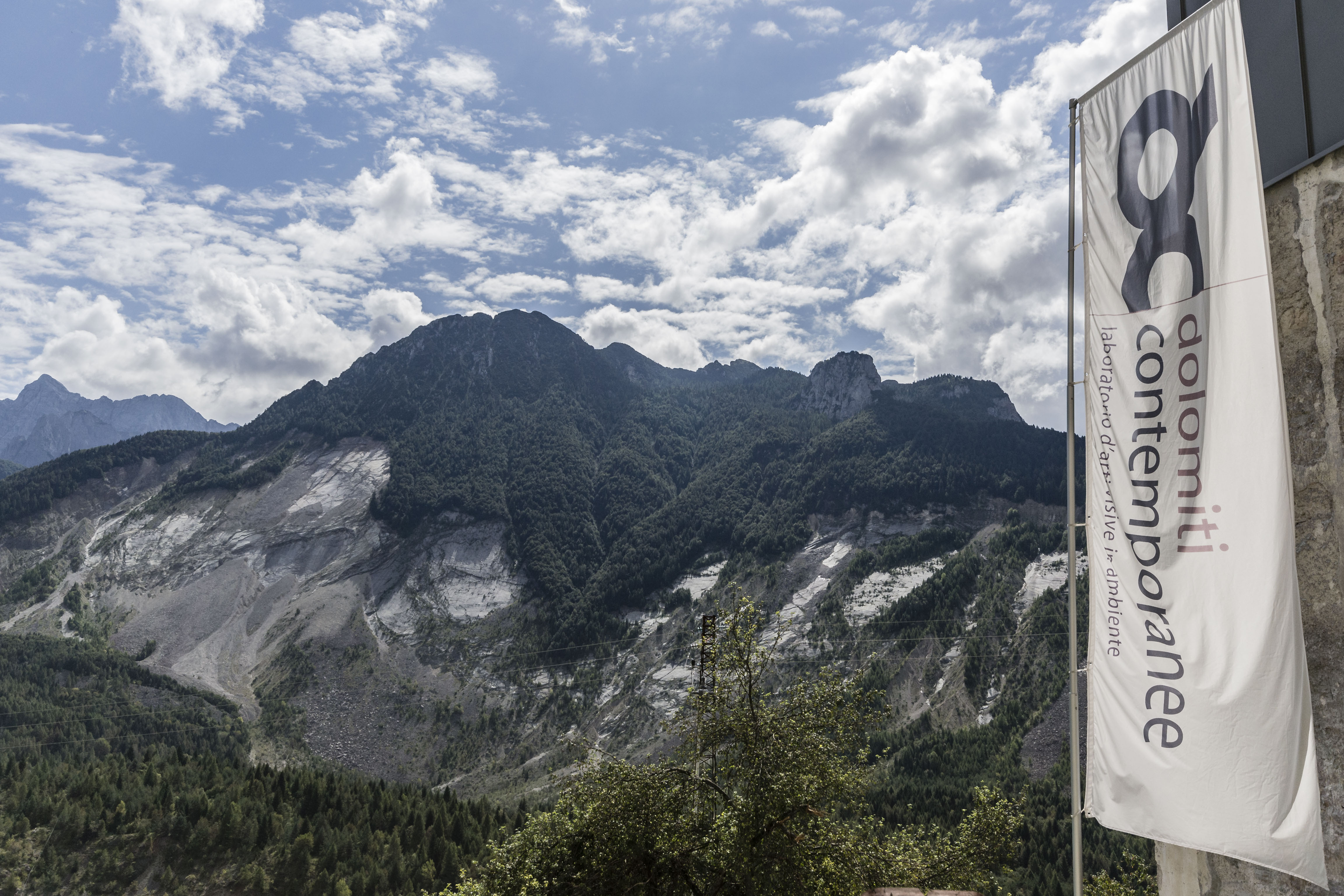
Tuesday, June 15th 2021, 2 – 4 PM, webinar panel:
two calls for vajont: fase _restart.
Vajont: [...]





